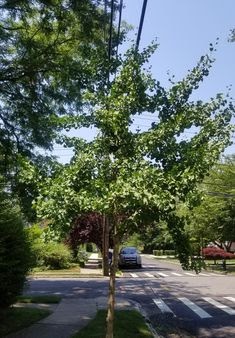Conservation
Smithsonian Institution Fossil Atmospheres Project
 The DMEA participates in the Smithsonian Institution Fossil Atmospheres Project, which aims to clarify the relationship between atmospheric CO2 levels and stconservationomatal and epidermal cells in Ginko tree leaves. Fossil Atmospheres is a National Science Foundation-funded project with the National Museum of Natural History and the Smithsonian Research Center. Ginko trees are found all over the world and date back to the Jurassic Period. Studying preserved fossil leaves and researching how their leaf cells have changed over time reveals information about the ancient atmosphere of Earth relative to today.
The DMEA participates in the Smithsonian Institution Fossil Atmospheres Project, which aims to clarify the relationship between atmospheric CO2 levels and stconservationomatal and epidermal cells in Ginko tree leaves. Fossil Atmospheres is a National Science Foundation-funded project with the National Museum of Natural History and the Smithsonian Research Center. Ginko trees are found all over the world and date back to the Jurassic Period. Studying preserved fossil leaves and researching how their leaf cells have changed over time reveals information about the ancient atmosphere of Earth relative to today.
The DMEA participates in the Citizen Science Leaf Survey component of this project, identifying local Ginko trees, mapping them and submitting leaf samples to Fossil Atmospheres. In Douglaston Manor, we are blessed to have several amazing specimens, male and females on Park Lane, Manor Rd, Oak Lane, Little Neck and Douglas road to name only a few. DMEA is now partnering with the Smithsonian Environmental Research Center and will continue to update current information on our Gingko tree population, as well as send out leaf samples to their Washington DC Lab.
A few interesting facts: Ginkgo biloba is one of the most distinct and beautiful of all deciduous trees. Its unique, fan-shaped leaves turn a stunning yellow color in the fall. It can tolerate many urban conditions including heat, air pollution, salt, and confined space. It is called a living fossil because it has no close living relatives and also appears to be the only plant species dating back 270 million years in the fossil record. The female trees produce fruit in late autumn. These fruits “stink” only when left on the ground to rot. The odorous fruit releases butyric acid, which also gives rancid butter its horrible smell. If carefully harvested, the fruits yield a nut meat that's edible in small amounts. It is worth noting that immature and uncooked ginkgo seeds are more toxic. Anyone can participate as a Citizen Scientist in the Fossil Atmospheres Project. For more information, visit this link!

